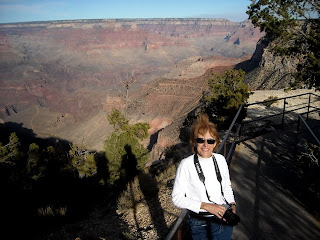Posts
Showing posts from November, 2009

Posted by
Thom Hoch
Biding Our Time in Bandera
- Get link
- Other Apps
Posted by
Thom Hoch
Brazen Bold Bandera
- Get link
- Other Apps
Posted by
Thom Hoch
Thanksgiving Day
- Get link
- Other Apps
Posted by
Thom Hoch
Is that Roast Turkey in the Air?
- Get link
- Other Apps
Posted by
Thom Hoch
Memories of La Posada Hotel
- Get link
- Other Apps
Posted by
Thom Hoch
Simple Sunday
- Get link
- Other Apps
Posted by
Thom Hoch
By the River in Bandera
- Get link
- Other Apps
Posted by
Thom Hoch
Overnighting in Ozona
- Get link
- Other Apps
Posted by
Thom Hoch
Moving Into Texas
- Get link
- Other Apps

Posted by
Thom Hoch
Living Desert State Park
- Get link
- Other Apps
Posted by
Thom Hoch
50 degree swing
- Get link
- Other Apps
Posted by
Thom Hoch
The Fisherman and the MBA
- Get link
- Other Apps
Posted by
Thom Hoch
Cold Carlsbad
- Get link
- Other Apps
Posted by
Thom Hoch
Carlsbad Caverns National Park
- Get link
- Other Apps
Posted by
Thom Hoch
Cell Phone Savings
- Get link
- Other Apps
Posted by
Thom Hoch
The Satellite TV Experiment
- Get link
- Other Apps
Posted by
Thom Hoch
Quiet, Enjoyable Saturday
- Get link
- Other Apps
Posted by
Thom Hoch
It Was All Downhill...
- Get link
- Other Apps

Posted by
Thom Hoch
Into New Mexico
- Get link
- Other Apps
Posted by
Thom Hoch
Petrified Forest National Park
- Get link
- Other Apps
Posted by
Thom Hoch
Very Hard Wood
- Get link
- Other Apps
Posted by
Thom Hoch
On a Corner in Winslow...
- Get link
- Other Apps
Posted by
Thom Hoch
From Canyon to Crater
- Get link
- Other Apps

Posted by
Thom Hoch
Now That's Some Hole
- Get link
- Other Apps
Posted by
Thom Hoch
Cold Slow Saturday Morning
- Get link
- Other Apps

Posted by
Thom Hoch
The Grand Grand Canyon
- Get link
- Other Apps
Posted by
Thom Hoch
The South Rim Boogie
- Get link
- Other Apps
Posted by
Thom Hoch
Tunnel Travel into Arizona
- Get link
- Other Apps

Posted by
Thom Hoch
Native Pictographs in Zion
- Get link
- Other Apps

Posted by
Thom Hoch
Hoodoos at Bryce Canyon
- Get link
- Other Apps
Posted by
Thom Hoch
Biking Through Zion
- Get link
- Other Apps
Posted by
Thom Hoch
Confusion in Zion
- Get link
- Other Apps